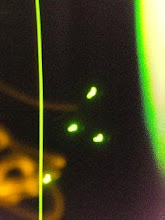Can depth exist in a film beyond that which is spelled out and apparent? Are the only motives that a story is allowed to include the ones that are opened in front of you? Card's quibbles on the film are pretty clear:
Orson Scott Card has made a highly successful, respectful career out of writing stories with very human characters who constantly explain (either through internal monologue or conversations with other characters) what they are feeling, exactly why everything is happening the way that it is and why they are doing what they are doing. And he's done this for the most part without sacrificing depth or meaning. But this is by no means the only way to create.[I]t's an art film -- which means that it is deliberately strange and unexplained. Things happen, but the writers and director go to some pains to conceal motive and reaction.
Oddly enough, the decision not to explain what's happening is usually regarded as a way to make a film "deep," but the opposite is the truth. When we are given no clue to the real motivations and intentions of characters, we have no choice but to settle for the most obvious -- the cultural cliches.
Movies don't have the benefit of pages of internal monologue, and real life has ambiguity. You can't always read somebody's emotions, and people often behave in odd, unpredictable ways that even they don't fully understand. Art cinema is clearly influenced by much of modern thought - that which recognizes and even relishes some ambiguity in daily life. It's also been the only modern "genre" to really incorporate ambience successfully, something that we've lost as a society in our slam-bang thrillers and blah dramas. In his musical and literary tastes Card definitely leans toward traditional forms - traditional singers and stories - over later, more postmodern stuff that learned to incorporate the dissonance and ambiguity we see in real life to great effect.
Is writing a film with deliberate structural engineering designed to underscore something really that bad? Surely there's room for films with subtle elements you can't grasp immediately, and the existence of such is not necessarily a blaring klaxon designed to alert us to pretension or hackery. Even as a lover of straightforward stories some of my favorite films have been exceedingly dry affairs with a lot of subtext, with things both intended and unintended to think about after the film ends and catch on subsequent viewings. (It took me ages to realize the irony of No Country For Old Men's Anton Chigurh getting into a sudden car accident, and it blew my mind. It was a deliberately contradictory element and I loved the implications.)
I've always defined "art" as that resonant feeling you get when you appreciate something but can't necessarily verbalize exactly why. I love that feeling, as I also love straightforward stories. I kind of wish that more people could learn to appreciate well-engineered experiences without impugning the motives of those who created them.


Every scrap of nonfictional wrting by OSC that I've ever read has made me want to punch his face, so I'm not going to click the link, but I'm not surprised he wrote a another dumb review.
ReplyDelete